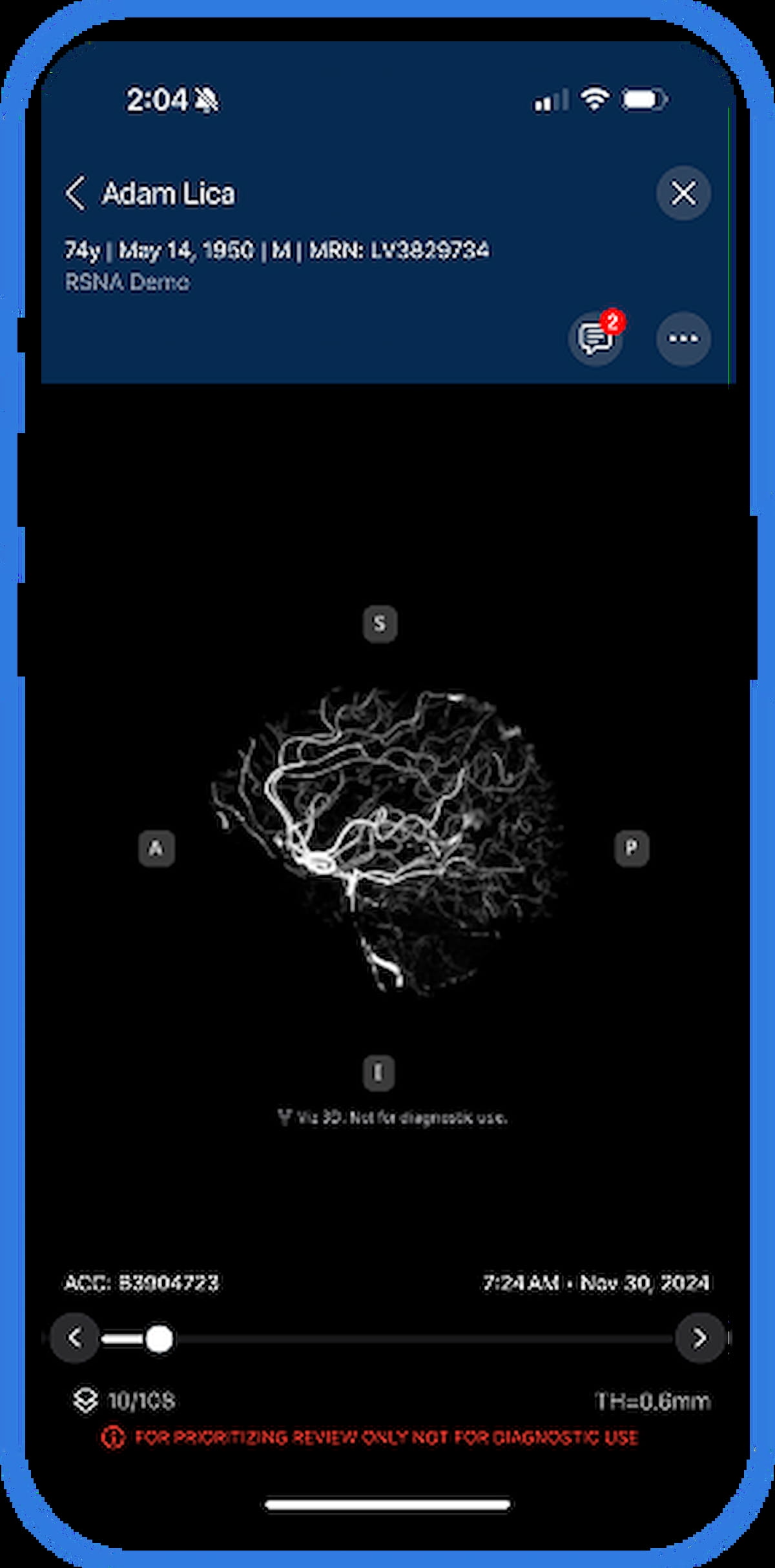Viz.ai Unveils AI-Powered Software for 3D CTA Neurovascular Imaging
Offering automated conversion of computed tomography angiography (CTA) into 3D images, Viz 3D CTA reportedly facilitates real-time insights into complex neurovascular anatomy.
While traditional neurovascular imaging poses challenges with manual 3D renderings, limited spatial context and difficulty in visualizing more distal vessel abnormalities, the launch of the artificial intelligence (AI) software Viz 3D CTA may provide a viable alternative.
Providing automated conversion of computed tomography angiography (CTA) scans into high-resolution 3D views in minutes, the Viz 3D CTA software enhances diagnostic clarity and efficiency, according to Viz.ai, the developer of the software.
The newly launched Viz 3D CTA software provides automated conversion of computed tomography angiography (CTA) scans into real-time, high-resolution 3D views of neurovascular anatomy, according to Viz.ai, the developer of the software. (Image courtesy of Viz.ai .)

The company said key attributes of Viz 3D CTA include skull-stripped views, automated post-processing and interactive tools including sagittal and axial rotation.
“Viz 3D CTA gives me a clearer, faster view of what’s going on. Being able to rotate the image and see vessels from different angles makes a big difference, especially in tricky areas,” said Benjamin Alwood, M.D., an assistant professor of vascular neurology at the University of Florida. “It’s also a great safety net for spotting occlusions that might otherwise be missed. Having this kind of clarity right away helps me make quicker, more confident decisions.”
Newsletter
Stay at the forefront of radiology with the Diagnostic Imaging newsletter, delivering the latest news, clinical insights, and imaging advancements for today’s radiologists.
Stroke MRI Study Assesses Impact of Motion Artifacts Upon AI and Radiologist Lesion Detection
July 16th 2025Noting a 7.4 percent incidence of motion artifacts on brain MRI scans for suspected stroke patients, the authors of a new study found that motion artifacts can reduce radiologist and AI accuracy for detecting hemorrhagic lesions.